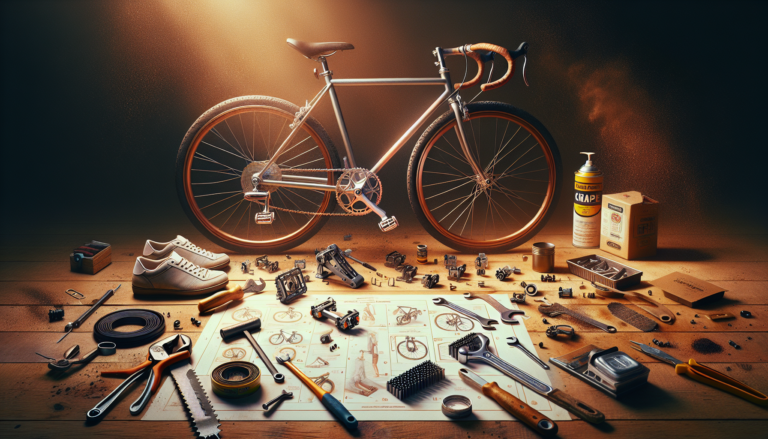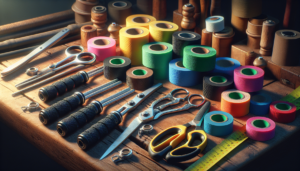Introduction to Installing Bike Pedals
Installing bike pedals is an essential skill for any cyclist, whether you’re a seasoned pro or just starting out. Proper installation ensures optimal performance, safety, and longevity of your pedals and bike. In this comprehensive guide, we’ll walk you through the process step-by-step, covering everything from the tools you’ll need to the common mistakes to avoid.
Why Proper Installation is Important
Correctly installing your bike pedals is crucial for several reasons:
- Safety: Poorly installed pedals can come loose while riding, potentially causing a serious accident.
- Performance: Properly installed pedals ensure efficient power transfer from your legs to the bike, maximizing your pedaling efficiency.
- Longevity: Correct installation helps prevent damage to the pedal threads and crank arms, increasing the lifespan of your components.
Common Mistakes to Avoid
When installing bike pedals, be sure to avoid these common pitfalls:
- Cross-threading: This occurs when the pedal is threaded into the crank arm at an angle, damaging the threads. Always start threading the pedal by hand to ensure it’s going in straight.
- Over-tightening: While pedals need to be securely tightened, applying too much force can damage the threads or cause difficulty in future removal. Follow manufacturer torque specifications.
- Forgetting to grease: Applying a small amount of grease to the pedal threads before installation helps prevent seizing and makes future removal easier.
Tools Required for Installing Bike Pedals
Before you begin, gather the following tools:
| Tool | Purpose |
|---|---|
| Pedal wrench | A thin, long-handled wrench specifically designed for gripping the flat surfaces on pedals |
| Hex wrench (Allen key) | Some pedals require a hex wrench for installation, typically 6mm or 8mm in size |
| Grease | A high-quality bicycle grease for lubricating the pedal threads |
Pedal Wrench: Types and Uses
Pedal wrenches come in several variations, each designed to provide the necessary leverage and access to the pedal flats:
- PW-3: A classic pedal wrench design, the PW-3 features a long, thin handle and a 15mm opening for gripping pedal flats.
- PW-4: Similar to the PW-3, the PW-4 offers a slightly thicker handle for improved comfort and leverage.
- PW-5: Designed for home mechanics, the PW-5 has a shorter handle and is often included in bicycle multi-tools.
Hex Wrench: When and How to Use
Some pedals, particularly high-end models, use a hex socket in the spindle for installation and removal. In these cases, you’ll need a hex wrench instead of a pedal wrench.
The most common sizes are 6mm and 8mm. Always check your pedal specifications or look for the size stamped on the spindle end.
To use a hex wrench:
- Insert the wrench fully into the hex socket.
- Ensure the wrench is seated squarely to prevent stripping.
- Turn counter-clockwise to remove, clockwise to install.
Grease and Anti-Seize Compound
Applying a small amount of grease or anti-seize compound to the pedal threads before installation serves several purposes:
- Prevents seizing: Over time, pedal threads can seize in the crank arm, making removal difficult or impossible. Grease helps prevent this.
- Aids installation: Grease lubricates the threads, allowing the pedal to thread in smoothly and easily.
- Protects against corrosion: Anti-seize compounds are particularly useful for preventing corrosion in dissimilar metals, such as when installing titanium pedals in an aluminum crank arm.
Always use a grease specifically designed for bicycles, such as Polylube PPL-1 or Park Tool Anti-Seize Compound ASC-1.
Step-by-Step Guide to Installing Bike Pedals
Now that you have your tools and supplies ready, let’s walk through the installation process.
Identifying Left and Right Pedals
First, ensure you have the correct pedal for each side:
- Left Pedal: Threaded in a reverse direction (counter-clockwise to install, clockwise to remove). Typically marked with a groove or “L” on the spindle end.
- Right Pedal: Threaded in a standard direction (clockwise to install, counter-clockwise to remove). Rarely marked.
It is crucial to install each pedal on the correct side, as the threads are designed to self-tighten as you ride.
Preparing the Pedals and Crank Arms
Before installation:
- Clean the pedal threads and the inside of the crank arm threads with a degreaser or solvent. Wipe away any old grease or debris.
- Apply a thin layer of grease or anti-seize compound to the pedal threads, coating all the way around.
- If installing used pedals, inspect the threads for damage. If badly damaged, consider using a pedal tapping kit to restore the threads before installation.
Threading the Pedals into the Cranks
- Start by hand-threading the pedal into the crank arm. This helps prevent cross-threading.
- For the right pedal, turn clockwise. For the left pedal, turn counter-clockwise.
- Thread the pedal in until you feel resistance, then stop.
- Using your wrench (pedal wrench or hex wrench), continue turning the spindle until the pedal is fully seated against the crank arm.
If you encounter resistance or the pedal becomes difficult to turn, stop and back it out. Check that you’re installing the correct pedal and that the threads are clean and undamaged.
Applying the Correct Torque
Once the pedal is fully threaded, it’s important to tighten it to the correct torque specification. This ensures the pedal is safely secured without risking damage to the threads.
Most pedals require a torque of around 360 inch-pounds (40 Newton meters). However, always check the manufacturer’s specifications, as this can vary.
If you don’t have a torque wrench, aim for a firm tightness—the pedal should not wobble or rotate freely. Just be cautious not to over-tighten, as pedal spindles or crank arms can snap if excessive force is applied.
Removing Bike Pedals: A Quick Guide
The process for removing pedals is essentially the reverse of installation, with a couple of key points to keep in mind.
Steps for Safe Pedal Removal
- Shift the chain onto the largest chainring. This protects your knuckles from cuts if they slip during removal.
- Position the crank arm to allow the best access to the pedal flats or hex socket. This is typically horizontal, with the pedal at the 3 o’clock or 9 o’clock position.
- Fit the wrench snugly onto the pedal flats or fully into the hex socket.
- For the right pedal, turn the wrench counter-clockwise to loosen. For the left pedal, turn clockwise.
- Once loose, finish removing the pedal by hand.
Dealing with Stuck Pedals
If a pedal proves difficult to remove:
- Check your direction: Remember, the left pedal has a reverse thread. Make sure you’re turning the correct way for each pedal.
- Apply leverage: Position the wrench to give the most mechanical advantage. You may need to use a breaker bar or slip a length of pipe over the wrench handle for added leverage.
- Apply heat: If a pedal is badly seized, applying heat to the crank arm around the pedal threads can help expand the metal and break the bond. Use a hair dryer or heat gun, being careful not to damage the crank finish.
If a pedal remains stuck after trying these methods, it’s best to seek the help of a professional mechanic to avoid causing damage.
Maintenance Tips for Bike Pedals
To keep your pedals spinning smoothly and prevent problems, a bit of regular maintenance goes a long way.
Regular Checks and Lubrication
- Check for play: Periodically check your pedals for side-to-side play or a gritty feeling when spinning. This can indicate worn bearings that may need servicing or replacement.
- Lubrication: If your pedals have external grease ports, add fresh grease every few months or as needed. For sealed cartridge bearings, this isn’t necessary or possible.
- Cleat wear: If you use clipless pedals, regularly check your cleats for wear. Most systems have wear indicators to show when replacement is needed.
Servicing Pedal Bearings
Some pedals, particularly higher-end models, allow servicing of the internal bearings. This involves disassembling the pedal body, cleaning and re-greasing the bearings, and reassembling.
If you’re comfortable with bicycle repairs, servicing instructions can often be found in the pedal manufacturer’s technical documents. However, if you’re unsure, it’s best to have this done by a professional mechanic to prevent damage to the pedals.
Conclusion
Installing and removing bike pedals is a fundamental skill for any cyclist. With the right tools, a bit of know-how, and some practice, you’ll be swapping pedals like a pro in no time.
Summary of Key Points
- Always use a pedal wrench or correctly-sized hex wrench for installation and removal.
- Apply grease or anti-seize compound to the threads before installation.
- Right pedal has a right-hand thread (clockwise to tighten), left pedal has a left-hand thread (counter-clockwise to tighten).
- Tighten pedals to the manufacturer’s specified torque, usually around 360 inch-pounds.
- Regularly check for bearing wear and service as needed.
Additional Resources
- For more detailed instructions and visual aids, check out Park Tool’s Pedal Installation and Removal article.
- See pedal installation in action with this video tutorial from Global Cycling Network.
- For more on pedal maintenance, read Sheldon Brown’s Bicycle Pedals page.
With this guide and a little practice, you’ll have the knowledge and confidence to swap pedals whenever the need arises. Enjoy the ride!






